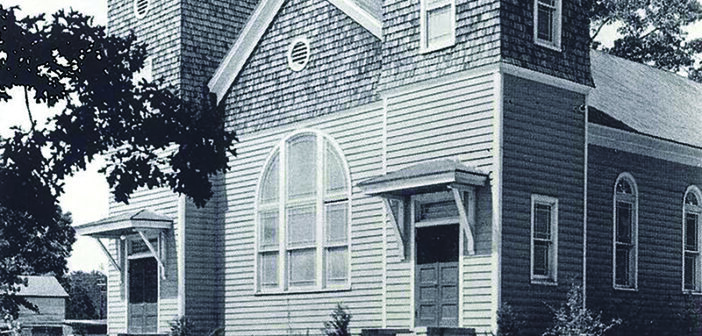In 1927, The Rev. J. H. Binford led the remodeling of the first structure of what is known today as Historic First Baptist Church Centralia. Two years following the close of the Civil War, the First Baptist Church Centralia was organized under the name of the Salem African Baptist Church. The small group of members forming this church had previously worshiped with the Salem Baptist Church (white), which is located on Centralia Road, two miles south of Centralia. Nineteen years ago, around 250 members of the 800-member First Baptist Church Centralia met at their historic church to celebrate their forebears. The Village News carried the story Feb. 20, 2002. Following is the reprinted story.
The Rev. Dr. Wilson E. B. Shannon, invited everyone to share in the celebration of African American history at the Historic First Baptist Church Centralia.. “We came here to thank God for what He has done, to remember our matriarchs and patriarchs that paved the way and made it possible for what we have,” said Shannon. He said the church was the only place they could go outside their homes to remember their past and pray for their future. Breaking into a beautiful a cappella song, Shannon embraced the message they would pass among each other with song. The church members joined in, and in doing so stepped into the past.
That past began in 1867. The Chalkley family gave an acre of ground that once was a grape arbor to the founders of Salem African Baptist Church. The families came together to build a church. Some of the names were: Branch, Dodson, Friend, Goode, Hill, Johnson, Lewis, Watkins, White, and Wilkinson. Many of these family names are still included in much of the membership today, according to church historian Jane Baskerville.
Before they were able to build their church, they met in a bush arbor. Their first structure was a small, framed building, which they later renamed the First Baptist Church Centralia. In 1926 they built a Gothic structure similar to the one that stands today. The church continued to grow, and in the early ‘60s they built a new church on Kingsdale Road where they continue to hold worship services. They are undergoing a $3 million building program, which will include a 36 by 60- foot, indoor, heated swimming pool. The pool is being constructed for senior and children swimming programs. A gym is also under construction with a banquet room that will seat 750 people.
When the membership moved to Kingsdale Road it held onto its historic church but used it mostly for storage. Shannon said five-and-a-half tons of books stored there were used for their missionary reading programs.
One night in 1996 some boys were drinking and lighting candles inside, and a fire started and the church burned. It was a sad day for the community. Many felt it was racially motivated, but Shannon said the congregation was not interested in hate and anger; they wanted healing and they forgave the boys. “Being good stewards of the property, the congregation wanted to rebuild,” said Shannon. They replicated the original structure in eight-and-a-half months with 800 volunteers. They did have some small contractors to complete some details, but mostly the church members built the new building. Shannon said the boys who started the fire came and helped as well.
The Gothic structure may seem unusual for this area. According to Baskerville, the design was influenced by the architectural styles that were in the mainstream during the early ‘20s. There were travelers who carried plans with them, and that is most likely how the church received its building plans.
Today, the structure is considered an auxiliary building and museum. The church has relics from its original building saved after the fire. These are enclosed in a glass case that stands about 10 feet tall and 5 feet square. The background photo is of the church burning. News articles and photos are displayed. One photo shows former Gov. Jim Gilmore, who was attorney general at the time, on the steps of the newly built church.
The community is able to use the auxiliary building for weddings, reunions, and other special occasions. The church uses it for special programs. “We share it and we do it interracially,” Shannon said.
Shannon has been pastor of First Baptist Church Centralia for 11 years. Before him, Samuel Moss Carter served as pastor for 40 years. Shannon participated in the dialogues the county had last year to help decide if Confederate History Month should be adopted. Shannon believes prejudice can be replaced with practical love. “They need to see us embrace, see us share. Our hearts beat together. We can change, we are the ones to cut it off,” he said.
The congregation celebrates Shannon’s 30 years as pastor at the First Baptist Church Centralia, located at 2920 Kingsdale Road.


